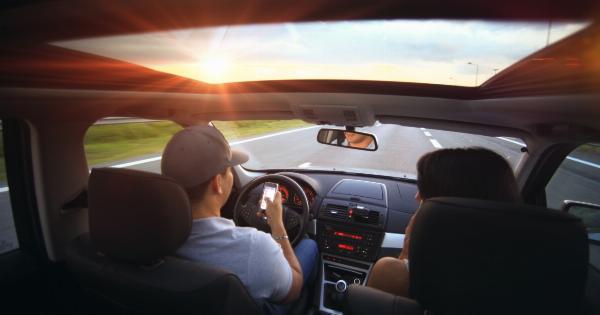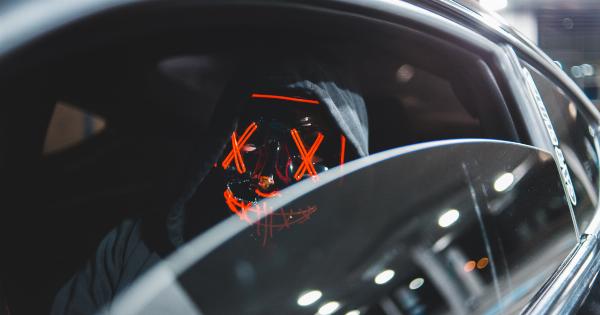Mobile phones and alcohol are two prominent factors that contribute to road accidents and fatalities.
With the proliferation of smartphones and the availability of various alcoholic beverages, it is essential to evaluate which poses a bigger threat on the road. This article aims to compare the impact of mobile phone use and alcohol consumption while driving, taking into account their prevalence, impairment levels, and legal implications.
Prevalence of Mobile Phone Use and Alcohol Consumption
Mobile phones have become an integral part of our lives, and their usage has skyrocketed over the past few decades. According to a recent survey, approximately 96% of Americans own mobile phones, with around 81% of them using smartphones.
Similarly, the prevalence of alcohol consumption is also high, with the majority of adults consuming alcohol on various occasions.
The Impact of Mobile Phone Use on Driving
Using a mobile phone while driving can significantly impair one’s ability to focus on the road and react to driving conditions.
Studies have shown that engaging in mobile phone activities such as texting or browsing social media while driving increases the risk of accidents by up to 23 times. This is primarily due to the cognitive distraction caused by diverting attention from driving to the mobile phone screen.
The Impact of Alcohol Consumption on Driving
Alcohol consumption affects a driver’s coordination, reaction time, judgment, and overall cognitive abilities. It slows down brain function and impairs critical skills necessary for safe driving.
According to the National Highway Traffic Safety Administration (NHTSA), alcohol-impaired driving accounts for approximately 29% of all traffic-related fatalities in the United States.
Comparing Impairment Levels
When comparing the impairment levels caused by mobile phone use and alcohol consumption, it is crucial to consider several factors. Alcohol impairs judgment, vision, coordination, and reaction time.
Depending on the blood alcohol concentration (BAC) level, the impairment can range from mild to severe, significantly increasing the risk of accidents.
On the other hand, using a mobile phone while driving also impairs cognitive abilities but does not directly affect physical coordination or vision.
The distraction caused by mobile phone use diverts attention from the road, leading to delayed reaction times and decreased situational awareness.
Legal Implications and Penalties
The legal implications of mobile phone use and alcohol consumption while driving vary across different jurisdictions. However, most countries have implemented strict regulations to combat these dangerous behaviors on the road.
Driving under the influence (DUI) of alcohol is a severe offense, punishable by fines, license suspension, mandatory alcohol education programs, and even imprisonment.
The penalties can vary depending on the driver’s BAC level and the number of previous offenses.
Using a mobile phone while driving has also been regulated in many countries. Laws prohibit texting, browsing, or talking on a handheld mobile device without a hands-free system. Violators may face fines, license points, and increased insurance premiums.
Public Perception and Awareness
Public perception and awareness play a crucial role in addressing the threats posed by both mobile phone use and alcohol consumption while driving.
While the dangers of drunk driving have been widely recognized, mobile phone use while driving often faces less social stigma.
However, numerous awareness campaigns and initiatives have been launched to educate the public about the risks associated with distracted driving.
Technological Solutions
Technological advancements have led to the development of various solutions to tackle the issue of distracted driving caused by mobile phone use.
Features such as “Do Not Disturb While Driving” mode, which automatically disables notifications when the user is driving, and hands-free voice commands have been introduced to minimize distractions.
As for alcohol-impaired driving, ignition interlock devices (IIDs) have been implemented in some jurisdictions. These devices require drivers to breathe into them and measure the driver’s BAC level.
If the BAC exceeds a predetermined limit, the vehicle will not start.
Educational Initiatives
Education plays a vital role in preventing road accidents caused by mobile phone use and alcohol consumption.
Schools, community organizations, and government agencies must prioritize educating individuals about the risks and consequences of these behaviors.
Expanding driver education programs to include comprehensive modules on the dangers of distracted driving and drunk driving can enhance awareness and foster a responsible driving culture.
Conclusion
In conclusion, both mobile phone use and alcohol consumption pose significant threats on the road, leading to numerous accidents and fatalities each year.
While alcohol impairs physical coordination and cognitive abilities, mobile phone use diverts attention from driving tasks, causing cognitive distraction. The legal implications, public perception, and availability of technological solutions and educational initiatives are essential in combating these dangerous behaviors.
Ultimately, it is important for individuals to prioritize road safety by refraining from using mobile phones and abstaining from alcohol while driving.































